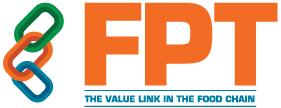Starch Recovery Systems
The Potato Starch recovery system is extracted using starch recovery systems. The system accepts processed water from the potato slice washing system, which allows the starch to be separated from the water using centrifugation or a decanter. The growing need for starch in the food industry is driving up demand for starch recovery systems.
Along with this, the global expansion of the potato processing sector has contributed to the ongoing need for starch recovery systems. In the food industry, starch is commonly used as a frying and thickening ingredient in soups, gravies, pie fillings, and sauces.
For manufacturing operations that lose starch to water as a result of washing or cleaning, starch recovery is appealing. Recovering the starch from the wastewater is a low-cost method of recovering a valuable commodity. Furthermore, it lowers the BOD/COD concentration of the effluent, resulting in less trade waste.
In addition, starch is a great gluten-free substitute for flour. All of these reasons contributed to the gradual growth in demand for worldwide starch recovery systems. Furthermore, the demand for potato-based items such as fries and chips is skyrocketing, which is driving up the demand for starch recovery systems. The biggest commercial problem, on the other hand, is lowering investments in expensive processing machines and systems.
On the other hand, growing major players' focus on capturing market share by providing optimal processing systems that minimize total process costs would ensure the market's healthy expansion during the projection period.
Plant size, component, application, and geography are all categories in the worldwide starch recovery systems market. The market is divided into three categories based on plant size: Giant, Small, and Medium. The market is divided into centrifuges and hydro cyclones, filling stations, screw conveyors, refining sieves, and vacuum filters, according to components. Chips & snack pellets, frozen items, and dehydrated products make up the applications sector.
Process Of Starch Recovery Systems
Before the following process step, peeled, sliced, or cut potatoes or other roots or tubers are usually washed with fresh water. Significant starch concentrations in the plant's wastewater flow build up and are either treated or dumped into the sewer. Because there is little to no contamination near the source, starch recovery is most useful.
To improve the starch concentration, a decanter centrifuge or a filter press are both acceptable mechanical dewatering technologies. Because the recovered starch cake is (re)processed without the addition of sulfur dioxide, water-borne microorganisms attack the solids right away.
As a result, the wet starch cake must be dried nearly immediately. Natural gas, LPG, steam, and a variety of other heat carriers can be used to heat the hot air. Ingetecsa can recycle waste energy and utilize it to power the drying facility, lowering operational costs even more.
Recovery of starch Systems is becoming increasingly prevalent. The starch is frequently reused in the production process. A potentially profitable approach is to sell the starch as a high-end product. The payback period of a recovery plant will be quick as long as starch finds its way back into the process.
Starch Recovery Systems Market
The market for starch recovery systems is a carbohydrate that is derived from agricultural raw materials that are widely used in both food and non-food applications. In the human diet, it is a necessary carbohydrate. Potato cells emit white potato starch when they are sliced or cut.
It's usually immersed in freshwater before going into the fryers for the following step. The starch recovery method helps to reclaim starch that is released during potato processing. By separating the starch from the potato from the cutting water and flume water, the starch recovery system extends the life of the water.
The global development of the potato processing sector is raising the demand for starch recovery systems. Furthermore, the varying adoption of starch and its derivatives for food nutrition is expected to have a significant influence on the starch recovery systems market.
The expanding demand for starch recovery systems is being fueled by the rise of the potato processing sector and the growing capability for environmentally friendly procedures. The increasing demand for processed potato products has resulted in the expansion of potato processing factories; this demand is driving the starch recovery system market.
The market has been divided into three categories: component, application, and geography. The market is divided into refining sieves, hydro cyclones, centrifuges, vacuum filters, screw conveyors, filling stations, and others based on components. The market is divided into frozen goods, chips & snack pellets, and dehydrated products based on the application of processed potatoes.
The starch recovery systems sector is directly impacted by the rising demand for processed potato products such as chips, french fries, and frozen potatoes. The rising demand for convenience foods and the functional qualities of starch and starch derivatives in a variety of end-user sectors are driving this market forward.
In the dehydrated goods line, manufacturers are coming up with a variety of forms and sizes, which are well received by customers. McCain Foods Limited has established itself as a key participant in the frozen and dried product categories by providing a variety of potato patterns and forms, including smileys and sticks.
The hydrocyclone or centrifuge is a crucial component of the starch recovery system. A hydrocyclone or centrifuge is used to separate the starch from the potato slurry. Many firms, such as Nivoba recommend hydrocyclones over centrifuges because they are easier to maintain and operate.
Systems for Recovering Starch Increased investment in research and development of Screw conveyors, and hydro cyclones in potato processing operations to manufacture a cost-effective and high-yielding industrial processor, which is expected to boost the market, is driving the market expansion.
Because of the increased demand for starch-derived goods, the Starch Recovery Systems Market held the greatest revenue share of 34% in 2020. Because of the growing use of frozen goods in the food and beverage sector, the starch recovery systems market is growing.
Continuing research and advances in end-use will propel the Starch Recovery Systems industry forward over the projected period of 2021-2026. Despite different technical advancements across the world, starch remains a significant building element in modern civilizations, with its use expanding in countries with high economic growth. Glucose syrup and high-fructose corn syrup are examples of starch derivatives that are widely employed in a variety of sectors.
Use as a culinary ingredient. Food starches are commonly used as thickeners and stabilizers in meals including puddings, custards, soups, sauces, gravies, pie fillings, and salad dressings, as well as in the production of noodles and pasta.
In the recent several years, the Indian starch and derivatives industry has seen major changes. Many significant firms are investing in the quality of starches and derivatives, which bodes well for the sector.
Benefits Of Starch Recovery Systems
The starch processing business works on lowering the cost of fresh water and wastewater disposal to reduce water use. The life of the water may be extended and waste-water treatment expenses decreased significantly by isolating the starch from the cutting water and flume water. Another benefit of starch recovery is the commercial value of the recovered starch.
Making the treated water reusable in the manufacturing process has a lot of advantages. This can be accomplished by filtering the water to remove particles, particularly starch.
Intake of freshwater at a minimum
The maximum decrease in COD/BOD in wastewater
There will be no increased water use.
Cleaning time for processing lines should be kept to a bare minimum.
Complete line integration
Operation is continuous and automated.
Robust, safe, and hygienic design that meets the food industry's stringent standards Low operational and maintenance expenses
Our Principal
In collaboration with Sicca Dania, Kiron Food Processing Technologies offers a variety of dryers and evaporators for the starch and Starch recovery system industries. We offer highly efficient and novel processes for the side streams, turning all of the raw product components into valuable products, Protein separation and drying, fibre purification, and drying, and fruit water concentration for fertilizers, in addition to traditional solutions for rasping potatoes and starch drying. We offer highly efficient turn-key facilities with sidestream process, waste, and water management, in collaboration with our industrial partners.










